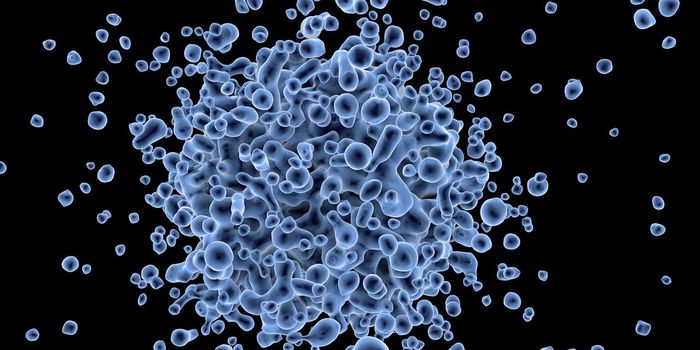Levels of RNA Transcripts From 'Junk' DNA Get Higher as We Age
The human genome contains somewhere around 20,000 genes that cells can use to make proteins, which carry out many biological functions. But there is a lot more to the genome than just protein-coding regions, and scientists are starting to learn more about these vast areas, once dismissed as junk DNA. New work has shown, for example, that features in these noncoding regions known as repetitive element transcripts could be closely related to aging. The findings have been reported in Aging Cell.
Repetitive elements are found throughout the genome and Tom LaRocca, an assistant professor in the Department of Health and Exercise Science and faculty member in the Columbine Health Systems Center for Healthy Aging at Colorado State University wanted to know more about how their activity may increase as people get older. LaRocca's team was particularly interested in the RNA that is made from these repetitive portions of the genome, and how their levels change during aging.
"The biomarker angle is important here," LaRocca said. "Ten to twenty years from now, we might be able to take samples or certain measurements from people in the doctor's office and get some insight into what's going on with them biologically, so that we can know how to best treat them and maximize their healthspan. If these repetitive element RNAs are a biomarker of aging, then maybe someday you can get a measurement like this done to see how your repetitive elements are being expressed. Are there too many of them? Is that a problem?"
In this work, the scientists assessed a dataset of RNA sequences (which represent the portions of the genome that are actively transcribed by cells at one point in time) found in the skin cells of healthy people from the ages of one to 94 years old. The computational analysis showed that the levels of most repetitive element RNA transcripts are elevated in older people.
The scientists verified these findings using skin cells from a biobank and fluorescent microscopy. A specific repetitive element, a transposon called Charlie5, was visualized in the cells. The work showed that Charlie5 levels were higher in the cells from older people, confirming the computational work (from the standpoint of this marker). The scientists suggested that repetitive RNA transcript levels may go up as cells not with chronological age but as they become less healthy.
"If you find something that changes progressively with aging, that finding alone is not necessarily interesting, because lots of things increase or decrease with age. What you really want to find is something that reflects biological aging," LaRocca said. "For example, let's say you're a smoker and you're under a lot of chronic stress. Then, perhaps even if you're only 45, your biological age—the health of your cells—could actually be 60 or 65. We think that repetitive element transcripts could be a marker of this."
The scientists assessed skin cells that were exposed to sunlight or not, knowing that UV-exposed cells can become damaged. As they suspected, there turned out to be more repetitive element RNAs in cells that were sun-exposed. Additional work showed that these RNA levels are higher in patients with a premature aging disorder called Hutchinson-Gilford progeria syndrome (HGPS).
The researchers hypothesized that these transcripts become more abundant with decreasing health because chromatin, which organizes and compacts DNA, is not as good at stopping repetitive regions from being erroneously expressed as the cell ages. They are also hoping to study chromatin structure and how it differs between people who exercise or not.
Sources: Phys.org via Colorado State University, Aging Cell








